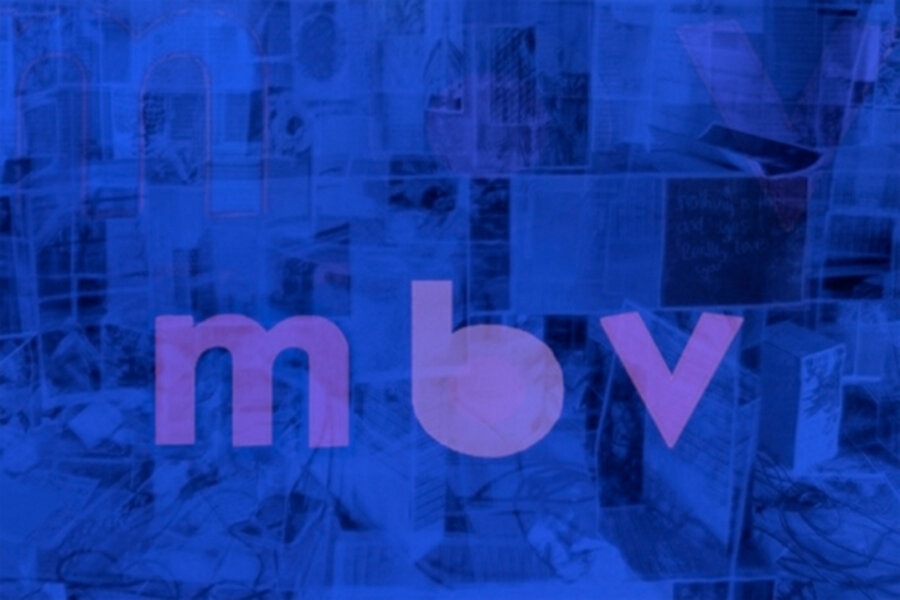This Valentine’s Day comes but once every 20 years
Loading...
The last time alternative rock band My Bloody Valentine released an album, Michael Jordan was on his way towards leading the Chicago Bulls to the second of six NBA titles. A Bush occupied the Oval Office – George H.W. Bush – and gas cost just a little over a dollar per gallon.
Such a hiatus explains the joy My Bloody Valentine devotees felt when the band announced they were at work on a follow up to 1991’s "Loveless." It is why, on Valentine’s Day 2013, indie music fans have an entirely different kind of Valentine to cherish and love.
The band’s unforgettable 1991 album pioneered a hypnotic musical style called "shoegaze" for the doubled-over pose its practitioners assume when playing their instruments. "Loveless" evoked a “wall of sound," burying whispered lyrics under layers of heavy, rambunctious guitars.
In "Loveless," distortion is not merely an effect applied with the click of a pedal. It is instead the center and the circumference of the album’s sonic landscape. Guitars are tools used to forge a sound so large it might as well occupy physical space, a tone dense enough to send forth some semblance of gravitational pull. When it was released in 1991, the album embodied a logical conclusion of rock and roll music.
Twenty-two years have passed. Michael Jordan is now nearly half a century old. Still, the sheer sonic force of "Loveless" remains unmatched.
That’s not to say nobody has tried. "Loveless" has had an enormous influence on a generation of musicians, including the Smashing Pumpkins, Nine Inch Nails, Radiohead, and just about any indie rock band to play music post-1991.
Even Kevin Shields, the band’s enigmatic frontman, has trembled at the prospect of following an album that often ranks towards the top of “greatest albums of all time” lists.
"I lost it,” he told The Guardian in 2004 on comparisons people have made between Shields and Brian Wilson, Syd Barrett, and other brilliant-musicians-cum-obsessive-recluses. “I lost what I had, and I thought, ‘You know what? I'm not going to put a crap record out.’"
Radio silence endured for a pair of decades, apart from Shields occasionally contributing to one project or another. Rumors of a follow-up to "Loveless" never quite seemed to disappear completely, and Shields dropped tantalizing hints throughout late 2012.
The patience paid dividends. On Groundhog Day 2013, a new My Bloody Valentine album finally became a reality.
It’s difficult to overstate just what that means to followers of this virtually mythical band.
“For those of us whose relationship to music and maybe even the act of hearing has been changed by 'Loveless,' it's hard to believe,” writes Mark Richardson in the influential indie music site Pitchfork. “I'd grown comfortable with the idea that there would never be another My Bloody Valentine album. Even as recently as two months ago, I figured it would never happen.”
But happen it did, and "m b v," the band’s third full-length album, is arresting. From the opening chords to its growling conclusion, it makes big noises, flush with seemingly impossible chord progressions and sounds you thought you’d never hear.
It most resembles the hazy dawdling of "Loveless," but makes use of the post-punk from My Bloody Valentine’s first full-length album, "Isn’t Anything." Bombastic drums undergird the track “who sees you.” A sulphurous guitar, distorted beyond recognition, shudders violently through “only tomorrow.” At points, it peaks, threatening to split the sound wide open.
The song “if i am” serves as a centerpiece, and is My Bloody Valentine at its finest, at once loud and quiet, harsh and soft. Dreamy “oohing” swirls on flirty guitar lines, over buried, pulsing drums. The serenade culminates in a melody that begins simple and sweet enough, and proceeds to collapse in on itself, tying a knot that requires innumerable listens to pick apart.
This is big music; "m b v" demands to be played at ill-advised volumes. It is not an easy album, and it is unlikely to spark a revolution on par with "Loveless." But it guarantees mesmerization and is singular in execution.
It might be it, this time – the end of My Bloody Valentine’s grossly important contribution to alternative sound. But, then again, that’s what they said about "Loveless." Between that album and the band’s latest opus, the apotheosis of rock music is contained somewhere within.
David Unger is a Monitor contributor.







